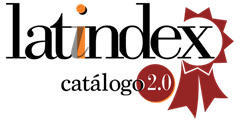Plagiarism Detection
Plagiarism can be "auto or duplicate, outright." Blatant is a very neat way to copy content from other published materials. Self-plagiarism means replicating the author's own material without providing a reference. Duplicate publication denotes the publication of the author's articles in two or more journals at the same time, with or without alteration of the content.
Plagiarism is dishonest. The correct way to give credit to the original information is by quoting and acknowledging. This will strengthen the value of the original author's work.
FesGro uses specialized software to detect plagiarism of all articles before their prior publication. If content plagiarism observed by editors, peer reviewers, or editorial staff at any stage of the publication process at the time of editing or proofreading is greater than 15% without citing, the author will be told to rewrite the manuscript. .
If the plagiarized content is detected after the publication of the article, the author will be notified and, depending on the plagiarism, the article will be removed from the journal. FesGro does not encourage any form of plagiarism. Therefore, we strongly recommend that you verify your content before submitting it for publication.
Fesgro adheres to the code of the Committee on Publication Ethics (COPE) in order to achieve the highest standards in the ethics of publications and to solve the problems derived from any publication (https://publicationethics.org/).








